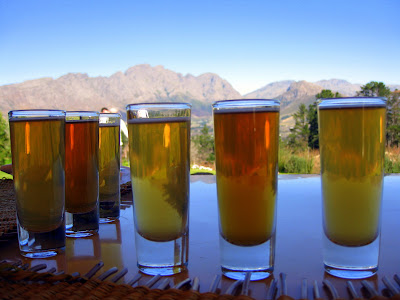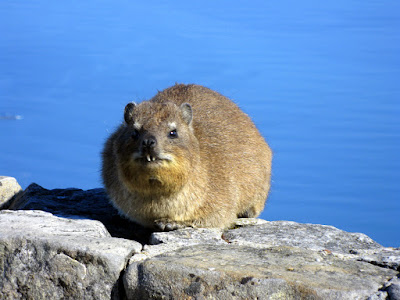Beijing – the north capital – or Peking… whatever you call it, it is immediately apparent that the city is very different than Shanghai and Hong Kong. Where Shanghai and Hong Kong have seemingly embraced the high-rise buildings, frenetic pace and commercialism we typically associate with cities of the west, Beijing seems positively laid back and quaint by comparison; almost as if from another era.
Though our first impression of Beijing was the modern airport and the even-more-modern airport express train to the city, we emerged from the subway station to a different world than we had become accustomed to in the previous weeks. There were no skyscrapers anywhere near us and though major roads and subways criss-cross the city, Beijing’s heart is in the hutongs that spread like a tapestry in the in-between spaces of the city.
Hutongs are, for lack of a better word, alleyways. But that really doesn’t do it justice. Hutongs represent a way of life for many of the people of Beijing. Close-knit families will share a typical hutong dwelling that are basically courtyard central homes. And many close-knit neighbors will share a hutong “alleyway.” Each one seems to represent a micro-community of its own.
Once again, I defer to Wikipedia:
Hutongs are a type of narrow streets or alleys, most commonly associated with Beijing, China. In Beijing, hutongs are alleys formed by lines of siheyuan, traditional courtyard residences. Many neighbourhoods were formed by joining one siheyuan to another to form a hutong, and then joining one hutong to another. The word hutong is also used to refer to such neighbourhoods.
Since the mid-20th century, the number of Beijing hutongs has dropped dramatically as they are demolished to make way for new roads and buildings. More recently, some hutongs have been designated as protected areas in an attempt to preserve this aspect of Chinese cultural history.
When we first arrived in Beijing we stayed in a hostel that was located in a hutong. Immediately, even though we were only short-term guests, we were made to feel a part of the family.
Beijing hospitality, though, showed itself even before that. As we came out of the subway after our ride from the airport, we got turned around and walked the wrong direction as we tried to find our hostel. Looking confused a local twenty-something on his bike asked if we were lost. We showed him on our map where we wanted to go and he quickly identified our mistake. He sent us off in our direction and he rode off in the opposite direction to join his friends to watch the World Cup match that had just begun. Three minutes later he came riding up behind us and said he thought we might still have trouble finding it and he wished to walk with us. We insisted we knew the way now and he should join his friends, but still he walked with us. He seemed embarrassed when we mentioned that he had given us a very good first impression of his city.
We spent the next few days wandering the city and seeing the sights. I won’t lie, typical “sight-seeing” was getting a bit old to us at this point of the trip. That is not to say that Beijing doesn’t offer some incredible sights. We saw the Forbidden Palace, the Temple of Heaven and a number of other sights. And they all were awe-inspiring.
One of our favorite moments happened while visiting Tiananmen Square. We noticed that several people were taking pictures of us as I guess we looked a bit out of place. One group of teenage girls was frantically snapping pictures with their cell phones. Noticing this, we decided to start posing. That was all the encouragement they needed. They quickly surrounded us to get their picture taken with us. Well, fair’s fair, so we had them take a picture with our camera as well.
We had a lot of rain prior to arriving in Beijing, but for the first few days the rains stayed away. One of those days found us at the Great Wall. We decided to head to the JinShanLing to Simatai stretch of the Wall. It’s a bit further from Beijing, but hasn’t seen as much restoration and also doesn’t get the volume of tourists. While the skies were clear, the heat was in full force. In fact, at 107 degrees, it was the hottest day on record since 1951. My flip-flops melted to the wall a bit.
The Wall is incredible. Of course everyone has seen pictures or heard that it is the only man-made structure visible from space with the naked eye (not true, by the way), but until you see it and walk a stretch of it, it doesn’t really sink in just how incredible this structure is.
We walked the 6 km stretch in about two hours, pausing in towers along the way to cool off as best we could. We saw very few other tourists and many sections had seen limited restoration, which added to the experience.
It does get very steep in places and the views –both of the mountains and the Wall winding in the distance – are mesmerizing.
Though we’re told this stretch of the Wall has far fewer hawkers than other stretches, we did see a few. They haul their water, souvenirs and even beer coolers and ice cream up the Wall to sell to the tourists. We met quite a few and were interested to find that those we met were Mongolian. The irony of a structure of this scale being built to keep the Mongolians at bay now providing a source of income for Mongolian hawkers was not lost on us.
If you have been reading the blog, you know we are always in search of good street food. We did hear that Wangfujing Night Market has street “stalls.” We researched it a little and found out that the street used to be a thriving street food area that the Chinese government decided was a “eyesore” and unsanitary for the 2008 Beijing Olympics. So we read that unfortunately the government started a campaign of showing up with police trucks and simply wreaking havoc by throwing tables food and kitchens into the trucks. However, after the trucks left allegedly the people showed their resilience by just grabbing new tables from the back and starting to cook again. Eventually a pact was struck and the government built stalls for the food vendors. It obviously feels different now than what it did pre-Olympics but you can find some interesting treats still. This is the place for that “wow” factor of fried seahorses and fried starfish. But you can get good grilled oysters, dumplings and fried squid (but for more than you would pay at most street food stalls).
And the rains did eventually come to Beijing, but worse still, the rains continued to fall in the south. As such, we decided that our previous plans to explore the Chinese mountains to the south would have to wait for our NEXT around-the-world trip. Instead, we stayed closer to Beijing and visited the small village of Cuandixia (pronounced (as best I can): KWAN-DEE-SHA).
We were able to take a series of subways and local buses to reach the small village in about three hours. This is a small historic village that has a history of about 400 years and preserves more than 70 courtyards with approximately 500 rooms that were built during the Ming Dynasty and the Qing Dynasty. This ancient mountain village, the best preserved in China, covers an area of about 10,000 square meters (2.5 acres) and is renowned as the 'Potala Palace' of the Beijing area. Today it is a popular day trip for domestic tourists. We decided to spend some time and rented a room for the night.
The village isn’t big and on the weekday we visited, was pretty deserted save for the locals. We did meet two women – an American named Janet and a Kiwi name Joanna – who were the only other non-Chinese in the town. No one else in town – neither the residents nor the handful of visiting Beijingers – spoke a word of English.
Still, we were able to find a nice dinner. There really are not formal restaurants, rather you just find someone who is willing to cook for you. We had eggplant with brown sauce, potatoes with wood ear mushrooms and pork belly soup with some crazy noodles. We agreed it was one of the best meals we had while in China. An interesting side-note is that we had dinner theatre in the form of an acrobatic squirrel.
We headed back to the home we were staying at as we could hear from across town that the party had gotten started there. Some vacationing Beijingers were also staying there it turned out and they were already well into their cups. Again they all wanted pictures with us -- probably more the three ladies than with me. And one gentleman took a particular shine to Joanna.
At one point Leslie, as she is wont to do, told a pirate joke (in a Scottish accent, of course). Though we knew our new Beijing friends could not speak a word of English, they laughed wildly on cue. Though some of them were getting pretty drunk and we had no common language, it was a great time. Though we went to bed around 11:00, incredibly, they stayed up to watch the World Cup match that didn’t even begin until 2:30 AM.
We returned to Beijing for a few more days before heading back to Shanghai for our flight to Africa. We spent almost two weeks in Beijing and really got a feel for the place. Though we were disappointed not to be able to visit the mountains, the extended time in Beijing allowed us to settle in and experience life in this capital city.




























































